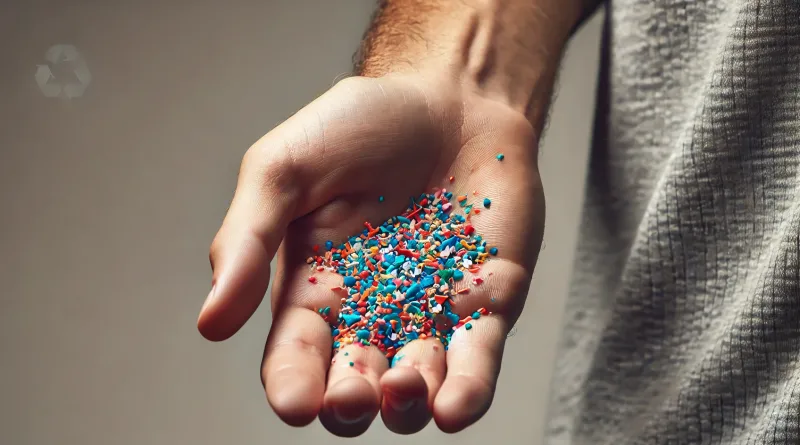Are You Eating Plastic? The Frequency and Dangers of Microplastics Ingestion
Microplastics are tiny plastic particles less than 5mm in size, resulting from the degradation of larger plastic debris and commercial product use. The omnipresence of microplastics in our environment has raised significant health concerns, especially regarding their ingestion by humans. This article explores the dangers associated with microplastics ingestion and how frequently people ingest these particles, highlighting the latest research and offering insights on reducing exposure.
Understanding Microplastics and Their Sources
What Are Microplastics?
Microplastics are classified into primary and secondary categories:
- Primary Microplastics: Manufactured small particles, such as microbeads used in cosmetics and personal care products.
- Secondary Microplastics: Result from the breakdown of larger plastic items like bottles, bags, and fishing nets through physical, chemical, and biological processes.
Common Sources of Microplastics
Microplastics are pervasive in various environments:
- Water Bodies: Oceans, rivers, and lakes contain high concentrations of microplastics from industrial discharge and waste runoff.
- Food and Beverages: Fish, shellfish, salt, and bottled water are common sources.
- Air: Microplastics are also present in the air we breathe, originating from household dust and industrial emissions.
How Often Do People Ingest Microplastics?
Research indicates that microplastics ingestion is an everyday occurrence:
- Dietary Intake: A study published in “Environmental Science & Technology” estimates that the average person consumes between 39,000 to 52,000 microplastic particles annually through food and beverages.
- Air Inhalation: People inhale microplastics daily, adding thousands more particles to their yearly intake.
- Drinking Water: Bottled water can contain significantly higher microplastic levels compared to tap water, contributing to daily ingestion.
The Dangers of Microplastics Ingestion
Physical and Chemical Health Risks
Microplastics pose several health risks:
- Physical Hazards: The small size of microplastics allows them to penetrate bodily tissues, potentially causing inflammation and tissue damage.
- Chemical Hazards: Microplastics can carry toxic chemicals, including heavy metals and persistent organic pollutants (POPs), which can disrupt endocrine functions and cause other health issues.
Biological Impact
The ingestion of microplastics can have significant biological impacts:
- Cellular Damage: Studies suggest that microplastics can cause oxidative stress and cytotoxicity at the cellular level, leading to cell damage and death.
- Immune System Effects: Chronic exposure may impair immune system function, making the body more susceptible to infections and diseases.
Latest Research on Microplastics Ingestion
Recent Findings
New research continues to shed light on the scope of microplastics ingestion:
- Gastrointestinal Effects: Research indicates that microplastics can alter gut microbiota, potentially leading to digestive issues and reduced nutrient absorption.
- Systemic Health Impacts: Studies have found microplastics in the bloodstream and various organs, suggesting potential for widespread systemic effects.
Case Studies and Reports
Recent case studies highlight real-world impacts:
- Human Placenta: A 2020 study found microplastics in human placentas, raising concerns about prenatal exposure and potential impacts on fetal development.
- Seafood Consumption: Communities with high seafood consumption show elevated levels of microplastics in their bodies, indicating a direct correlation between diet and microplastic intake.
Reducing Exposure to Microplastics
Personal Actions
Individuals can take steps to minimize their exposure:
- Choosing Tap Water: Opt for tap water over bottled water to reduce microplastic intake from drinking water.
- Reducing Plastic Use: Avoid single-use plastics and choose sustainable alternatives to decrease overall plastic pollution.
- Eating Fresh Food: Prefer fresh, unpackaged food to limit exposure from plastic packaging.
Policy and Regulation
Regulatory measures can also play a crucial role:
- Bans on Microbeads: Several countries have banned microbeads in cosmetics, a significant source of primary microplastics.
- Waste Management: Improving waste management systems to reduce plastic pollution and promote recycling can mitigate the release of microplastics into the environment.
Microplastics ingestion is a widespread issue with potentially severe health implications. While the exact dangers are still being studied, evidence points to physical, chemical, and biological risks associated with these tiny particles. By understanding the sources and frequency of microplastics ingestion, individuals and policymakers can take proactive steps to reduce exposure and safeguard public health.




